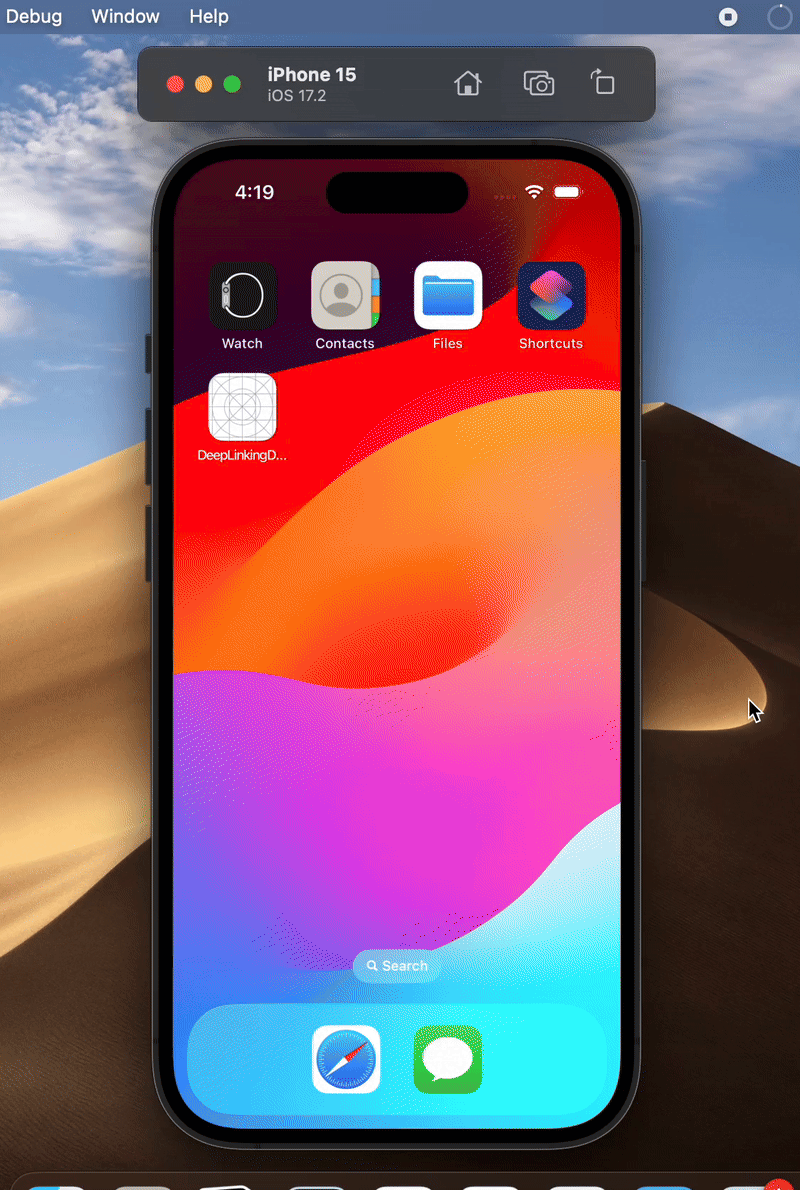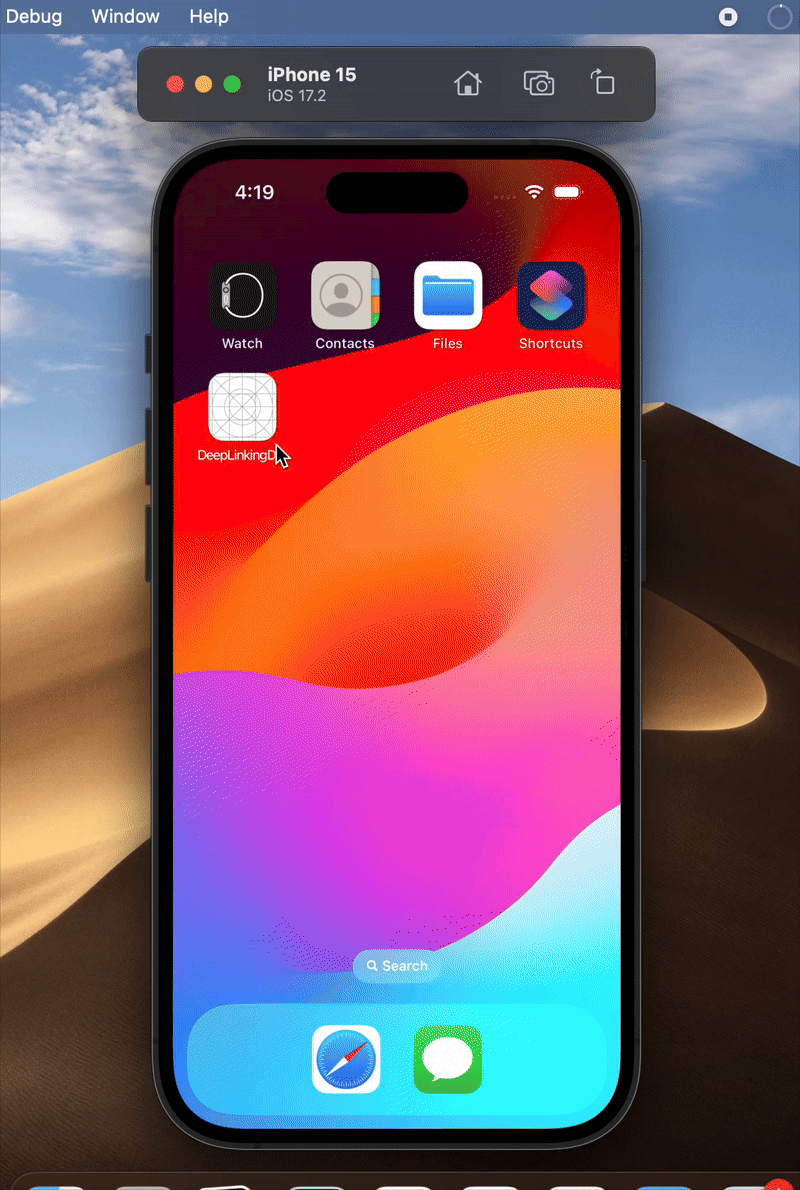How to Implement Deep Linking in React Native (2025 Guide)
 Abhishek Sonawane
Abhishek SonawaneEver wondered how clicking an Amazon product link sent to you on WhatsApp or email opens the Amazon app directly to that exact product skipping the browser entirely?
That magic is called deep linking.
In this article, we’ll explore how deep linking works and how you can implement it in your React Native app.
How Deep Linking Works
Deep linking allows external URLs, whether from a browser, email, SMS, QR code, or another app to open a specific screen within your app rather than just launching it on the home screen.
For example:
myapp://workout/123might take the user directly to a workout detail page.https://myapp.com/posts/456might open a blog post inside your app instead of the website.
This is especially useful for:
Personalized onboarding flows
Sharing content between users
Marketing campaigns
Push notifications or emails that point to specific features
How Mobile OS Handle Incoming Links
When a user taps on a link, both Android and iOS have their own way of deciding how to handle it.
On Android, the operating system looks through all installed apps to see if any of them have registered to handle that type of link using what's called an intent filter. If your app is configured to handle a custom URL scheme like myapp://..., or a verified web domain like https://myapp.com, Android will either show your app as an option to open the link or launch it directly especially if you've set up App Links (Android's version of verified web links) for automatic opening. However, if the app isn’t installed, links using custom schemes will do nothing, while App Links will open in the device’s default browser.
On iOS, the system handles incoming links through either custom URL schemes or Universal Links. If your app is installed and Universal Links are properly configured and verified with your domain, iOS will bypass Safari and open your app directly to the matching screen. If not, the link simply opens in Safari, behaving like a normal web link.
Setting Up Deep Linking in a React Native App
Step 1: Create a New React Native Project
npx @react-native-community/cli@latest init DeepLinkingDemo
cd DeepLinkingDemo
Step 2: Install React Navigation and Dependencies
npm install @react-navigation/native
npm install react-native-screens react-native-safe-area-context react-native-gesture-handler react-native-reanimated react-native-vector-icons
npm install @react-navigation/native-stack
Don’t forget to install pods (for iOS):
npx pod-install
Step 3: Setup for iOS
To be able to listen to incoming links add following lines:
(for swift code / AppDelegate.swift)
Add the following methods inside your AppDelegate class:
import UIKit
import React
import React_RCTAppDelegate
import ReactAppDependencyProvider
@main
class AppDelegate: UIResponder, UIApplicationDelegate {
var window: UIWindow?
var reactNativeDelegate: ReactNativeDelegate?
var reactNativeFactory: RCTReactNativeFactory?
func application(
_ application: UIApplication,
didFinishLaunchingWithOptions launchOptions: [UIApplication.LaunchOptionsKey: Any]? = nil
) -> Bool {
...
...
return true
}
// Deep linking custom URL scheme example://
// -----ADD THIS-----
func application(_ application: UIApplication, open url: URL, options: [UIApplication.OpenURLOptionsKey : Any] = [:]) -> Bool {
return RCTLinkingManager.application(application, open: url, options: options)
}
}
// --------------------
You can also support universal links, which allow your app to open from standard HTTPS URLs like
https://deeplinkingdemo.com
// Deep linking custom URL scheme example://
// -----ADD THIS-----
func application(_ application: UIApplication, open url: URL, options: [UIApplication.OpenURLOptionsKey : Any] = [:]) -> Bool {
return RCTLinkingManager.application(application, open: url, options: options)
}
// Deep linking for Universal links (https://example.com/...)
// -----ADD THIS-----
func application(_ application: UIApplication, continue userActivity: NSUserActivity, restorationHandler: @escaping ([UIUserActivityRestoring]?) -> Void) -> Bool {
return RCTLinkingManager.application(application, continue: userActivity, restorationHandler: restorationHandler)
}
// --------------------
For Universal links, you will have to set up app domain as well from xcode.
launch the app in Xcode and click on signing capabilities tab

Click on “+capability” to add a new capability and add associated domain


Add your domain name

Last step for iOS
At the bottom of Info.plist, add:
<!-- Deeplinking -->
<key>CFBundleURLTypes</key>
<array>
<dict>
<key>CFBundleURLSchemes</key>
<array>
<string>deeplinkingdemo</string>
</array>
</dict>
</array>
Step 4: Setup for android
To make this work on android, you have to add a new intent in AndroidManifest.xml
DeepLinkingDemo/android/app/src/main/AndroidManifest.xml
<intent-filter>
<action android:name="android.intent.action.VIEW" />
<category android:name="android.intent.category.DEFAULT" />
<category android:name="android.intent.category.BROWSABLE" />
<data android:scheme="deeplinkingdemo" />
</intent-filter>
Similar to iOS to support universal links add following intent to the same AndroidManifest file
<intent-filter android:autoVerify="true">
<action android:name="android.intent.action.VIEW" />
<category android:name="android.intent.category.DEFAULT" />
<category android:name="android.intent.category.BROWSABLE" />
<data android:scheme="http" />
<data android:scheme="https" />
<data android:host="www.deeplinkingdemo.com" />
</intent-filter>
Step 5: basic navigation setup
import { createNativeStackNavigator } from "@react-navigation/native-stack";
import { NavigationContainer } from "@react-navigation/native";
import HomeScreen from "./src/screens/HomeScreen";
import ProductDetails from "./src/screens/ProductDetails";
const Stack = createNativeStackNavigator()
function App() {
return (
<NavigationContainer>
<Stack.Navigator>
<Stack.Screen name="Home" component={HomeScreen} />
<Stack.Screen name="ProductDetails" component={ProductDetails} />
</Stack.Navigator>
</NavigationContainer>
);
}
export default App;
Step 6: Setting up a linking config
To enable deep linking in your React Native app, you need to configure your NavigationContainer with a linking config.
The configuration object consists of -
1. prefixes array - An array of URI schemes or domains your app should handle.
2. config object - Contains a screens object that define how incoming URLs map to specific screens in the app. In this screens object, the keys corresponds to a screen name used in your navigation setup, while the value defines the URL path pattern that will trigger navigation to that screen.
import { createNativeStackNavigator } from "@react-navigation/native-stack";
import { NavigationContainer } from "@react-navigation/native";
import HomeScreen from "./src/screens/HomeScreen";
import ProductDetails from "./src/screens/ProductDetails";
const Stack = createNativeStackNavigator()
function App() {
const linkingConfig = {
prefixes: [
'https://deeplinkingdemo.app',
'deeplinkingdemo://',
],
config: {
screens: {
Home: 'home',
Profile: 'profile/:userId',
}
}
}
return (
<NavigationContainer linking={linkingConfig} >
<Stack.Navigator>
<Stack.Screen name="Home" component={HomeScreen} />
<Stack.Screen name="ProductDetails" component={ProductDetails} />
</Stack.Navigator>
</NavigationContainer>
);
}
export default App;
Passing Parameters via Deep Links
Remember that Amazon product link example from the beginning? Deep links not only open a specific screen in your app they can also carry data, like product IDs or user profiles, to display relevant content right away.
In React Navigation, this is done by defining dynamic segments in the linking configuration. You use a colon (:) to indicate a dynamic part of the URL (like :id), which is then passed as a route parameter to your screen.
Linking config:
linking = {
prefixes: [
'https://deeplinkingdemo.app',
'deeplinkingdemo://',
],
config: {
screens: {
ProductDetails: 'product/:id',
},
},
};
ProductDetails screen:
import { StyleSheet, Text, View } from 'react-native';
import React from 'react';
import { useRoute } from '@react-navigation/native';
const ProductDetails = () => {
const route = useRoute();
const { id } = route.params;
return (
<View>
<Text>Product for: {id || 0}</Text>
</View>
);
};
export default ProductDetails;
So if you open a link like deeplinkingdemo://product/123, it’ll land you on the ProductDetails screen with 123 passed as the id parameter just like those deep links that open right to an Amazon product.
To test deeplinks
open Safari or chrome in your simulator / device and paste the link
deeplinkingdemo://home
You can also try simulating opening a deep link using command for your simulator (for iOS)
xcrun simctl openurl booted "deeplinkingdemo://home"
for Android emulator
adb shell am start -W -a android.intent.action.VIEW -d "deeplinkingdemo://home" com.deeplinkingdemo
And we are done 🎉


Conclusion
You can find the complete source code for this setup here 👇
https://github.com/abhishek-sonawane/deepLinkingDemo
Thanks for reading! If you found this article helpful, share it with fellow developers and let me know your thoughts or questions in the comments. Happy coding! 🚀
Subscribe to my newsletter
Read articles from Abhishek Sonawane directly inside your inbox. Subscribe to the newsletter, and don't miss out.
Written by

Abhishek Sonawane
Abhishek Sonawane
Mobile & Full-Stack Developer based in Mumbai, India. I love building sleek mobile and web apps, and I share what I learn along the way here. Outside of tech, I enjoy fitness, reading, and exploring new ideas.